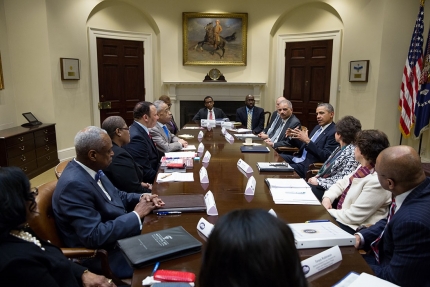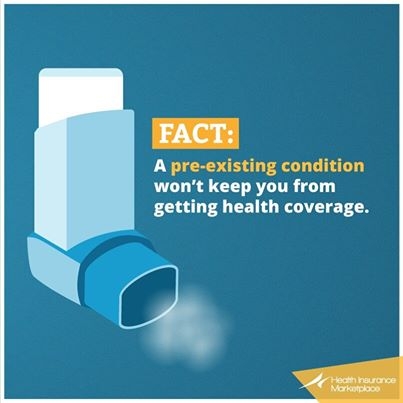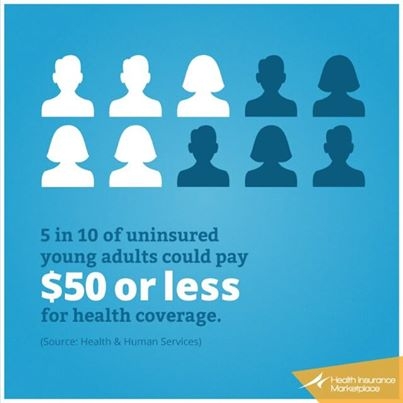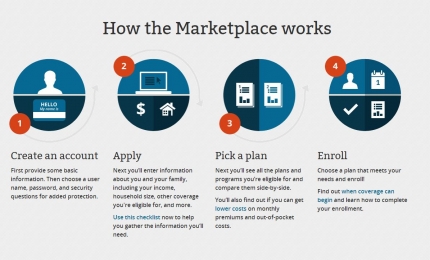Latest News
EPA Takes a Step Forward in Protecting our Nation’s Farm Workers
Posted by on February 25, 2014 at 6:04 PM EDTLast week, the U.S. Environmental Protection Agency (EPA) announced proposed revisions to the Worker Protection Standard in order to protect the nation’s two million farm workers and their families from pesticide exposure.
I am proud that this administration has taken another step forward in protecting our nation’s farm workers, a cause that is at the very root of my passion for public service. My hero and grandfather, Cesar Chavez, fought tirelessly for the rights of farmworkers, from higher wages and worker compensation, to access to drinking water and safety from pesticides.
My grandfather’s work centered around justice and ensuring that hard working, decent people were treated with the respect and dignity that all human beings deserve. EPA’s revised Worker Protection Standard will afford farm workers similar health protections to those already enjoyed by other workers in other jobs. The rule, covering farms, forests, nurseries and greenhouses, has not been updated for 20 years – and certainly for many it is long overdue.
The EPA’s proposed changes to the Agricultural Worker Protection Standard (WPS) include:
- Annual mandatory trainings (rather than once every 5 years) to inform farm workers about the protections they are afforded under the law, including restrictions on entering pesticide-treated fields and surrounding areas, decontamination supplies, access to information and use of personal protective equipment. Expanded trainings will include instructions to reduce take-home exposure from pesticides on work clothing and other safety topics.
- Expanded mandatory posting of no-entry signs for the most hazardous pesticides. The signs prohibit entry into pesticide-treated fields until residues decline to a safe level.
- First-time ever minimum age requirement: Children under 16 will be prohibited from handling pesticides with an exemption for family farms.
- New no-entry 25-100 foot buffer areas surrounding pesticide-treated fields will protect workers and others from exposure from pesticide overspray and fumes.
- First-time ever access for farmworker advocates and medical personnel (in addition to farmworkers) of pesticide application and label information, as well as newly-required hazard information, all to be kept for two years versus 30 days.
- Mandatory record-keeping to improve states’ ability to follow-up on pesticide violations and enforce compliance. Records of application-specific pesticide and hazard information, farmworker training and early-entry notification must be kept for two years.
This proposal represents more than a decade of extensive stakeholder input by federal and state partners and from across the agricultural community including farm workers, farmers, and industry. At its core this proposal includes key commonsense revisions that give workers the protections they rightfully deserve, recognizing, as my grandfather did, that we simply cannot turn our backs on the people that help put food on our tables every day.
As the President said at the dedication of the Cesar Chavez National Monument, “[Cesar] believed that when a worker is treated fairly and humanely by their employer that adds meaning to the values this country was founded upon, and credence to the claim that out of many, we are one. And he believed that when a child anywhere in America can dream beyond her circumstances America can dream beyond her circumstances and work to realize that dream, it makes all our futures just a little bit brighter.”
For more information on the EPA’s Proposed Worker Protection Standard: http://www.epa.gov/oppfead1/safety/workers/proposed/index.html
Julie Chavez Rodriguez is the Deputy Director for the Office of Public Engagement at the White House.
Learn more aboutChampions of Change: Women Veteran Leaders
Posted by on February 24, 2014 at 1:17 PM EDTWomen serve in every branch of the military, representing 14.5 percent of today’s active duty military and nearly 18 percent of National Guard and Reserve forces. By 2020, the Department of Veterans Affairs estimates women Veterans will constitute more than 12 percent of the Veteran population.
Officially, women were permitted to service in the military in 1901. Their service introduced America to a new era of military service and subsequently, women Veterans. For generations now, women Veterans have been honorably serving in the military, and we know their service and success continue when they take off the uniform.
As the nation celebrates Women’s History Month, it is important to salute women Veterans for their accomplishments and contributions to society. They have broken barriers and capitalized on the many leadership opportunities afforded by military service. We know that women Veterans are models of character, courage and commitment who continue to blaze trails and open doors.
This March, the White House Office of Public Engagement will host a Champions of Change event for women Veteran industry leaders, to highlight their incredible contributions to our nation’s business, public and community service sectors.
We are asking for your help to identify women Veterans who may be “Champions of Change.”
For example, a champion may be a woman Veteran who is:
- Serving as subject matter expert within her industry
- Actively mentoring to enable others’ success
- A successful entrepreneur and/or businesswoman
- Leading a program to improve the well-being of fellow Veterans
- A leader in government
- Demonstrating success with public/private partnering
Click on the link below to submit your nomination by midnight on Friday, February 28th (be sure to choose Women Veteran Leader in the "Theme of Service" field of the nomination form).
Nominate a Women Veteran Leader Champion of Change
We are looking forward to hosting this event and to highlighting the great work women veterans are doing across the country.
Elisa Basnight is the Director of the Center for Women Veterans at the U.S. Department of Veterans Affairs.
Learn more about VeteransWe the Geeks: Celebrating Black History Month
Posted by on February 21, 2014 at 1:45 PM EDTWe at the White House couldn’t be more excited to celebrate Black History Month by highlighting some of our nation’s most prominent and promising African American science, technology, engineering, and mathematics (STEM) achievers and shining a light on the importance of ensuring the Nation’s next generation of inventors, discoverers, and innovators fully reflects the diversity of America.
Members of racial and ethnic minority groups are projected to become the majority of America’s population in the next 30 years. Today, however, they account for just 28 percent of America’s STEM workers. We know that for America to remain competitive in a global economy, we need to do all we can to draw upon the nation’s diverse talent pool, which includes historically underrepresented groups in STEM, such as women and minorities.
That’s why, next week, OSTP is hosting and participating in a series of activities to highlight diverse STEM role models and the urgent need to help minority students across the country envision themselves as tomorrow’s discoverers, explorers, developers, and STEM innovators.
To kick off our week of activities, join us Tuesday, February 25 at 3:00 pm EST for "We the Geeks: Celebrating Black History Month"
In this Google+ Hangout, some of the Nation’s most extraordinary African American STEM innovators and STEM-education advocates will share their inspiring personal stories and thoughts on how we can all step up to help strengthen America’s STEM-skilled workforce by making it broader and more diverse.
Del Blog de la Casa Blanca: El Presidente Obama viajó a México para la Cumbre de Líderes de América del Norte
Posted by on February 20, 2014 at 2:03 PM EDTEl Presidente Obama viajó a México para la Cumbre de Líderes de América del Norte
Hoy, el Presidente viajó a Toluca, México para la Cumbre de Líderes de Norteamérica de este año, junto al Presidente de México, Enrique Peña Nieto y el Primer Ministro de Canadá, Stephen Harper.
Poco después de llegar a Toluca, el Presidente Obama sostuvo una reunión bilateral con el Presidente Peña Nieto. Antes de su reunión, el Presidente Obama hizo algunos comentarios iniciales acerca de la cumbre:
[L]a Cumbre de Líderes de Norteamérica nos brinda la oportunidad de construir sobre el enorme progreso que ya hemos logrado el asegurar que Norteamérica sea la región más competitiva del mundo y que seamos capaces no solamente de continuar integrando nuestras economías efectivamente para crear empleos en los Estados Unidos, México y Canadá, pero que seamos capaces de proyectar bienes y servicios estadounidenses, mexicanos y canadienses alrededor del mundo para el beneficio de nuestros pueblos.
Y la cooperación va desde cómo hacer nuestras fronteras más eficientes para avanzar en la Asociación TransPacífica que brinda la oportunidad de abrir nuevos mercados en la región más rápida y más poblada del mundo, la región transpacífica asiática.
También tenemos la oportunidad de analizar cómo podemos trabajar juntos más unidos en intercambios científicos y educativos. Estamos particularmente interesados en asegurar que los jóvenes en México, los Estados Unidos y Canadá puedan estudiar y trabajar en cada país, y estamos tratando de expandir esos tipos de intercambios.
De modo que esta es una oportunidad extraordinaria para nosotros para construir sobre el trabajo que ya hemos hecho durante el año pasado.
A continuación de la reunión bilateral, los Presidentes Obama y Peña Nieto asistieron a un almuerzo de trabajo con el Primer Ministro Harper. Después del almuerzo, el Presidente Obama y el Primer Ministro Harper caminaron y conversaron, antes de que los tres líderes hicieran uso de la palabra ante un grupo de líderes empresariales, educativos y de la sociedad civil de Norteamérica.
Durante los comentarios, el Presidente Obama reiteró el deseo de los tres líderes de fortalecer los “ya increíbles” lazos que existen entre las tres naciones:
Si ustedes piensan en Norteamérica, con tres fronteras así de extensas dentro de las cuales compartimos un conjunto de valores comunes, un conjunto de principios comunes, un compromiso con la democracia, un compromiso con los mercados libres, un compromiso con el comercio en el cual somos aliados e interactuamos pacíficamente, eso es un regalo muy preciado. Y es uno, que yo creo, nosotros tres estamos comprometidos a desarrollar y fortalecer para las generaciones futuras.
Esta tarde, los tres líderes participaron en la Cumbre Trilateral de Líderes de Norteamérica y están celebrando una última conferencia de prensa conjunta para concluir las actividades del día.
Para obtener más información:
- Comentarios del Presidente Obama antes de la Reunión Bilateral
- Palabras del Presidente Obama, el Presidente Peña Nieto y el Primer Ministro ante los líderes empresariales, educativos y de la sociedad civil de Norteamérica
David Hudson es el Director Asociado de Contenido para la Oficina de Estrategia Digital
Partnering for Action in African American Communities
Posted by on February 19, 2014 at 11:20 AM EDTLeaders from some of the country’s foremost African American civil rights organizations joined President Obama and a handful of Administration leaders in the Roosevelt Room of the White House yesterday. To open the meeting, I was joined by Attorney General Eric Holder, Director of the Domestic Policy Council Cecilia Muñoz, Cabinet Secretary Broderick Johnson and White House Advisor for Health Policy and Implementation Phil Schiliro for a discussion outlining the President’s priorities for this year of action.
Present were leaders from the NAACP, The National Urban League, the National Action Network, the NAACP Legal Defense Fund, the Leadership Conference on Civil and Human Rights, the National Bar Association and the National Coalition of Black Civic Participation. The group covered a range of issues of great concern to the President, and the African American community, touching on job growth, education and job training, maintaining our momentum in enrolling the uninsured through the Affordable Care Act, bringing more fairness and efficiency to our criminal justice system, increasing the minimum wage, and ensuring ladders of opportunity for all.
What was clear in this meeting was that many of the goals the President set forth in his State of the Union address will become reality because of the strong partnerships that he and his administration have forged with leaders from the civil rights community who work hard every day to advocate equality and opportunity for all.
The President will continue to work with Congress where they are able and willing to act, but meetings like this provide optimistic reminders that there remain other leaders in the country who can act right now – to improve the economy, to ensure greater opportunity for all, and to keep this country moving in the right direction. The capacity for the President and his White House to convene thought leaders, decision makers, and community leaders, all of whom have access to both resources and the audiences we aim to reach, is a powerful tool, and one which President Obama hopes to wield effectively in 2014 for the good of all Americans.
Valerie Jarrett is Senior Advisor to the President and Chair of the White House Council on Women and Girls
Learn more about Civil RightsEnsuring a “Time to Thrive” for LGBTQ Youth
Posted by on February 19, 2014 at 11:08 AM EDTLast weekend, the Human Rights Campaign, in partnership with the National Education Association and American Counseling Association, hosted the first-ever “Time to Thrive” conference in Las Vegas, Nevada. The conference brought together hundreds of educators, school administrators, coaches, social workers, mental health providers, and other youth development staff for a conversation about promoting safety, inclusion, and well-being among lesbian, gay, bisexual, transgender, and questioning (LGBTQ) youth.
Since taking office, President Obama and his Administration have taken significant steps to advance equality for the LGBT community – including addressing and preventing bullying and harassment of LGBT young people in classrooms and communities around the country. That’s why I was proud to moderate a panel discussion with colleagues from the Departments of Education, Health and Human Services, and Agriculture to highlight some of the bullying prevention and youth empowerment resources available across the federal government.
If you want to learn more, check out these resources:
White House Resources
- It Gets Better Videos
- White House LGBT Conference on Safe Schools and Communities
- President Obama & the First Lady: Conference on Bullying Prevention
StopBullying.gov
- StopBullying.gov Training Center
- Media Guidelines for Bullying Prevention
- StopBullying.gov Youth Engagement Toolkit
- Follow/like StopBullying.gov on Facebook, Twitter and Tumblr
U.S. Department of Health and Human Services
- Family Acceptance of LGBT Young People Leads to Better behavioral Health Outcomes
- Practitioner’s Resource Guide: Helping Families to Support Their LGBT Children
- Substance Abuse and Mental Health Services Administration LGBT Webpage
- Increasing Capacity for Reducing Bullying and Its Impact on the Lifecourse of Youth Involved
U.S. Department of Education
- Civil Rights Data Collection
- ED-DOJ School Discipline Guidance Package
- U.S. Department of Education Dear Colleague Letter: Harassment (October 2010)
- U.S. Department of Education Dear Colleague Letter: Gay Straight Alliances and the Equal Access Act (June 2011)
- U.S. Department of Education Office of Special Education Programs Dear Colleague Letter: Bullying (August 2013)
- Creating a Safe and Respectful Environment on Our Nation's School Buses
- Creating a Safe and Respectful Environment in Our Nation's Classrooms
U.S. Department of Justice
- United States Reaches Agreement with Arcadia, California, School District to Resolve Sex Discrimination Allegations
- Departments of Justice and Education Resolve Harassment Allegations in Anoka-Hennepin School District in Minnesota
- Departments of Justice and Education Reach Agreement with Tehachapi, California, Public Schools to Resolve Harassment Allegations
U.S. Department of Agriculture
Gautam Raghavan is an Advisor in the White House Office of Public Engagement.
Made in Rural America: Helping Appalachian Business Sell to the World
Posted by on February 18, 2014 at 5:54 PM EDTForty-two percent of the Appalachian Region's population lives in rural areas. President Obama’s Made in Rural America export and investment initiative presents a strategic opportunity to expand the region’s exporting sector, grow jobs, and ensure long-term sustainable growth. It is one more example of how the White House Rural Council works to provide economic opportunity in rural America.
Over and over, my travels throughout the region have underscored the role that expanded export markets can have in creating jobs and strengthening local economies. Yet many small businesses in Appalachia view entering the export market as a daunting challenge, something they haven’t really focused on before. The President’s proposal is specially designed to help these rural companies get in the export game by connecting them to export information and assistance. These additional resources will strengthen the capacity of Appalachian business to compete and succeed in the global economy of the 21st century.
Rural enterprises from across Appalachia have a history of demonstrating their competitive success in capturing new export opportunities. In September 2013, an Appalachia USA delegation of 18 home furnishing and wood product enterprises generated over $50 million in new export sales at the FMC international trade show in Shanghai, China. One month earlier, a 22-member mining equipment, technology, and service delegation achieved similar export success from their Appalachia USA pavilion at the Asia-Pacific International Mining Exhibition in Sydney, Australia.
First-time export ventures are a challenge but they offer the potential of significantly expanded markets. At the U.S. Commercial Service 2013 Trade Winds Business Forum in Seoul, South Korea, Appalachia USA delegates from a small manufacturing enterprise in Sistersville, West Virginia seized the opportunity to make their first sales into the global market. It is small manufacturers like this who will have greater opportunities under the President’s plan.
By creating a comprehensive strategy connecting federal resources with rural leaders and businesses to expand exports, the Made in Rural America initiative will bring new and welcome energy to Appalachia’s growing export sector. The President’s initiative will help increase the number of small manufacturers who can succeed, and it will help Appalachian businesses sell to the world.
Earl F. Gohl is the Federal Co-Chair of the Appalachian Regional Commission, a regional economic development agency that represents a partnership of federal, state, and local government established by an act of Congress in 1965.
Learn more about RuralMobilizing for a Healthier Future: Participate in the Jewish Community Day of Action for Health Care Coverage on February 18th
Posted by on February 18, 2014 at 9:48 AM EDTThe number 18 is a powerful number in Jewish heritage. It represents “chai,” meaning life. Today, taking care of ourselves and others so that we all live love and healthy lives is more important than ever. The Jewish community has always placed a high importance on mental, spiritual, and physical health. Whether it’s your mother’s matzoball soup when you’re sick or helping someone from your temple get the care they need, maintaining good health for a long life is a core Jewish value.
In order to ensure that every person, regardless of gender or age or preexisting condition, has access to our nation’s healthcare system, we are getting the word out on how Americans and their families can access health affordable, quality health insurance between now and March 31 in the federal and state health insurance Marketplaces. Since October 1, more than 3 million people have enrolled in a private insurance program through the Marketplaces, and over 6.3 million have enrolled in Medicaid or CHIP through state agencies or state-based marketplaces. It’s impossible to know when illness could strike, and it’s crucial that every American have some form of health insurance. That’s why we’re making a big push to educate about enrolling in the healthcare exchanges for everyone we know.
On February 18th, in partnership with the National Council of Jewish Women (NCJW), we’re calling on congregations, Jewish advocacy and social service organizations, and anyone in the Jewish community who is interest to participate in the Jewish Community Day of Action for Health Care Coverage. Here are 18 ways that you or the organizations you belong to or work with can participate in the Day of Action, which is all about ensuring a healthy future for Americans and their families, including in the American Jewish community. We hope you will join us!
18 Ways to Participate in February 18th Day of Action
- Post on Facebook to remind your friends of key dates and facts about enrolling in the health insurance marketplace. Visit www.facebook.com/healthcare.gov for ideas.
- Write an article for your organization newsletter or member bulletin.
- Put up posters around your community that provides information about how, why, and by when to get covered in the marketplace.
- Talk to a young person in your life about the benefits of health insurance. Tell them how 5 in 10 young adults could pay $50 or less per month for coverage, less than most cell phone bills!
- Post on Twitter using the hashtag, #GetCovered and let people know they can access the marketplace (1) online at www.healthcare.gov; (2) by phone at 1-800-318-2596, (3) in person at www.localhelp.healthcare.gov, (4) or by mail at http://1.usa.gov/1bcLknf.
- Host a Shabbat dinner or house party, and talk about why getting covered is important to you.
- Send an email to a local list serve as a friendly reminder that the enrollment deadline is coming up on March 31, about the financial assistance available to many who enroll, and why you care that people on the list have the information they need to access quality, affordable coverage.
- Publish an ad in your local newspaper about key benefits of coverage in the marketplace.
- Plan a text study that explores Jewish perspectives on health care access, caring for our bodies, and caring for our neighbors.
- Reach out to media outlets at local community colleges and universities.
- Drop off palm cards about health coverage at your local synagogue, child care center, gym, or other local business.
- Sign up for NCJW’s distance learning conference call, “When Chicken Soup Isn’t Enough: Helping Our Communities Get Covered,” to learn more about the benefits of marketplace coverage. Go to NCJW’s website for more information.
- Prepare a “Mitzvah Day” for your congregation before March 31. Work with another organization already involved in outreach to uninsured residents in your community to help raise awareness about how coverage works and how to access an affordable, quality plan in the marketplace.
- Write an op-ed encouraging reads to sign up for health insurance. ! Especially if you are a member of the clergy or an organizational leader, your voice inspires others to learn more about health coverage.
- Partner with local college student clubs to set up an information table on campus at venues such as the student center, cafeteria, or near the bookstore.
- Post a widget or badge on your organization or business website.
- Host a viewing party for an educational webinar about the marketplace provided by the US Department of Health and Human Services (HHS) Faith-based and Neighborhood Partnership Center. Webinars are available in English and Spanish. Learn more and see the upcoming schedule at http://www.hhs.gov/partnerships/resources/aca_101-invite.html.
Learn more about Health Care
- &lsaquo previous
- …
- 43
- 44
- 45
- 46
- 47
- 48
- 49
- 50
- 51
- …
- next &rsaquo







Twitter